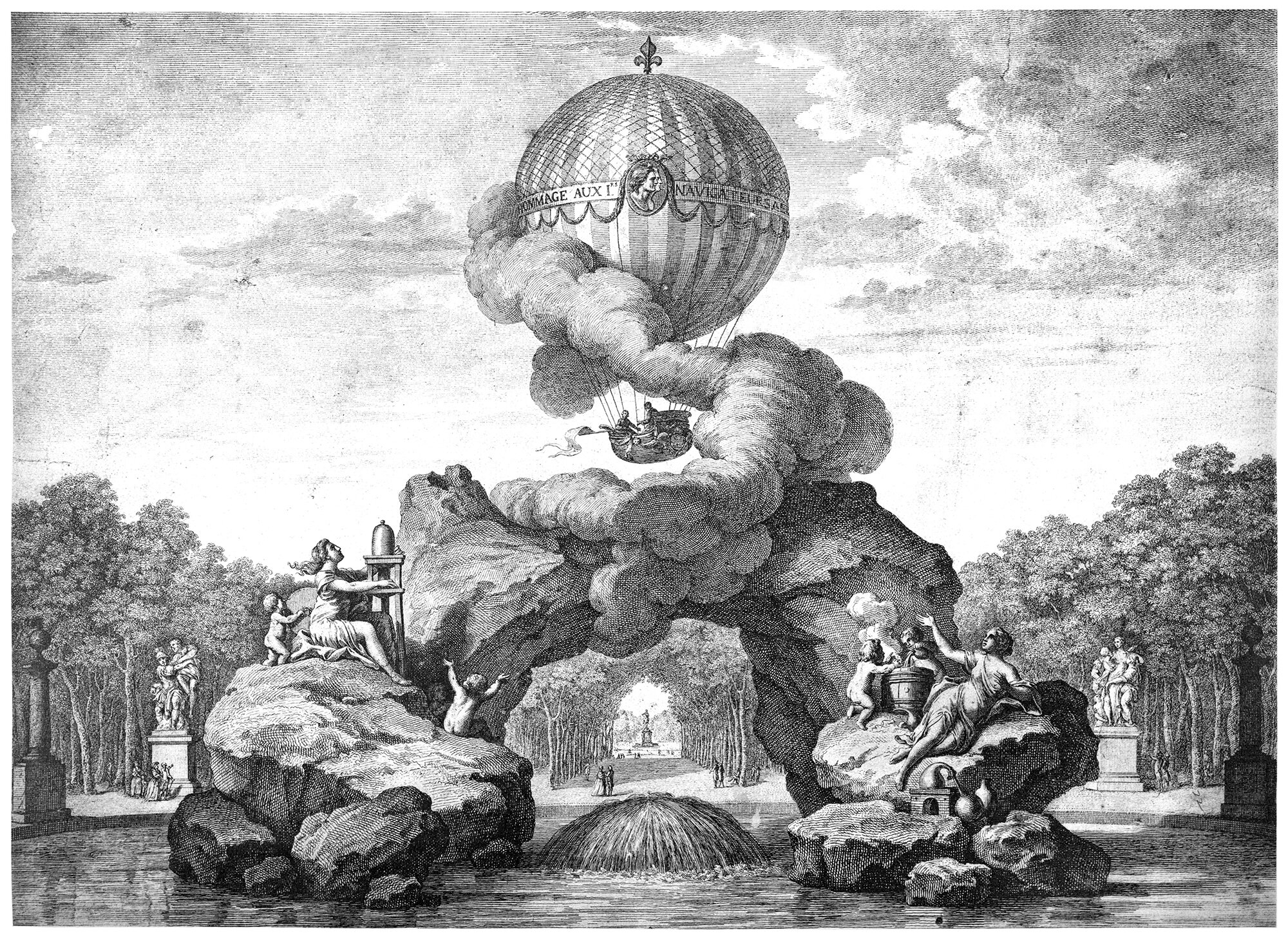A Monument to the Glory of the First Aerial Navigators
An engraving by an anonymous author, showing a proposal for Projet d'un monument à la gloire des premiers navigateurs aériens, or A Project for a Monument to the Glory of the First Aerial Navigators, to be built in the Tuileries Garden in Paris. The original date is unknown, but it was published in in the book L’Aeronautique des origines a 1922.
Pictured above is the Projet d'un monument à la Gloire des Premiers Navigateurs Aériens, or the Monument to the Glory of the First Aerial Navigators. It was designed by an anonymous author for a site in the Tuileries Garden in Paris, and it was published in the 1922 book L’Aeronautique des Origines a 1922. It consists of a stone arch placed in a fountain, with a balloon flying above it supported by a cloud-like form. There are various figures on the stone arch, which gesture up to the balloon in order to signify the importance of human flight.
It’s an intriguing idea, but the design is a bit awkward due to the cloud element. The entire monument would most likely be made of stone and bronze, so it makes sense to have a rigid means of supporting the balloon. In the end, however, it comes off as bulky and heavy, which runs contrary to the idea of flight. The designer did a good job to give it a sense of dynamism, however, and I suppose it was the best possible solution given a stone and bronze sculpture. It would be great to have other documentation of the design to better understand it, but this engraving is all we have. Still, I think this would’ve been impressive had it been built.
Read more about other ideas for flying machines here.
Original source for the image located here.

